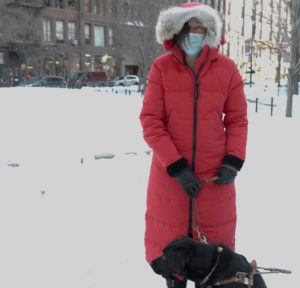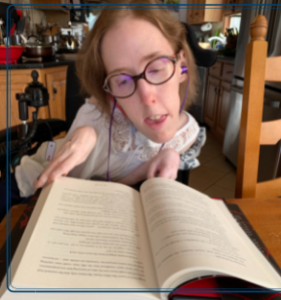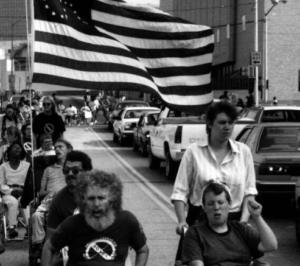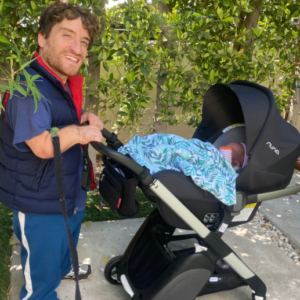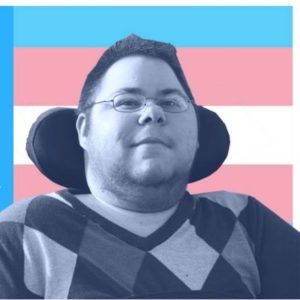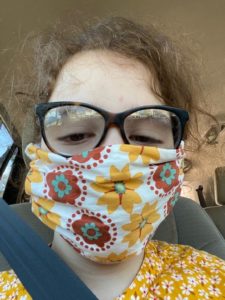The Makings of an Accessible Vacation Resort Experience
by Alicia Krage
My family makes it a priority to take a vacation together every year. Some vacations are smaller (Wisconsin Dells is just a three-hour drive from Chicago, for example), while others have been a little fancier. For about five years now, my parents have allowed significant others to tag along, and this year was my boyfriend Juan’s very first vacation with my family.
This year we’d all decided to go to the Excellence Riviera Cancun. A friend who is blind had his honeymoon there, but his wife could see, so I didn’t honestly think to ask him about how accessible and accommodating the resort was. My parents had been there a few times and spoke highly of the customer service they received there, so my expectations were pretty high.
I feel confident enough traveling with Juan, and I knew we could always ask for help if we needed it, but when my dad made our reservations, he made sure the resort understood that our group included a blind couple. I couldn’t be sure what this might mean in terms of the services that would be provided to us or whether it’d make a difference whether they knew in advance or not. In the end, though, I was glad my dad went ahead and told them.
One of the many things I love about Juan is that he’s a people person and has no problems talking to strangers. I knew he’d be up for this adventure in Cancun.
Another thing I love about him is how thoughtful he is. I’ll give you an example. Juan lives in Houston, I live in a suburb of Chicago, and he flew in to Chicago on his own the day before we were leaving for Cancun so our family and our significant others could all travel from Chicago as a group the next day. And then there’s this: the day my parents and I went to Midway to pick Juan up, he was able to find assistance from the gate so quickly that he was already at baggage claim by the time we’d arrived.
Finding his luggage was easy, too: his mom texted me earlier that morning with a picture of it so my parents knew what to look for.
In Cancun, we stayed in the swim-up suites, which meant each couple had their own private terrace complete with table and chairs, a lounge bed, and a ladder into the public pool. When my mom showed us around our suite (including the terrace), she pointed out a small patch of rocks next to the ladder. What a great landmark! When navigating around the suite, neither of us had our white canes with us. We decided that any time we’d be heading to the lounge bed or the pool, at least one of us would have our canes and see if the patch of rocks would help us get our bearings.
We spent a lot of time out on our terrace. On most mornings, we’d order room service for breakfast and eat outside. Afternoons were spent lounging by the pool, and sure enough, using the rocks as a landmark worked out beautifully. I used my cane in my right hand while holding Juan’s hand in my left, trailing around the table and chairs and the lounge bed before reaching some grass. After a short trek through the grass, we’d come across the rocks, and to the left of that was the ladder. I’d hit the ladder with my cane a few times so Juan would hear where it was.
“Now I have to figure out where to put this,” I thought out loud to myself during our first venture to our side of the pool. I wanted to set my white cane down by our ladder while we were swimming, but I worried someone might move it. Finally an idea came to me. I could fold it up and attach it to the side of the ladder. That way, we’d know the ladder with the cane was the one that led to our suite. No one would be able to move it, and it wouldn’t get lost. This video by Perkins School for the Blind shows how a white cane can be folded up and attached places. This worked out well and served as almost a public service announcement that we were blind. Other guests would approach us in the pool and ask if we needed anything (like a raft to float on, for example). One nice man even came up to us to tell us that the pool was pretty crowded, so if we got turned around there would be several people available to help us. One time I was in the pool by myself, and when a woman saw me climb the ladder and feel for my cane, she came up to me and politely asked, “Excuse me, are you looking for your cane?” What a pleasant surprise! Not only did she call it a cane (normally people call it a stick), but she asked me if I needed help rather than just assuming I did.
The resort also had a coffee shop. Those of you who have read my previous posts here on the Easterseals National blog will not be surprised to hear I was there every day. One morning, Juan and I decided to try and see if someone from the hotel would be willing to escort us there, not wanting to rely on my parents or sisters to walk us. We called the front desk, and when Juan explained we were both blind and asked if someone would be willing to assist us. They said, “Of course!” They were very prompt and at our door in about 5 minutes. This quickly became a part of our morning routine.
The vacation flew by, and he didn’t go back to Houston right away: two days after we arrived back in Chicago, I accompanied my dad to drop Juan off at the airport.
When our friends (his from Houston, mine from Chicago) ask how our trip went, both of us excitedly tell them about the great service, and how this would be an ideal vacation spot for blind and visually impaired individuals. Not only is it great that it’s all inclusive (so once you arrive, there’s so much to do that you don’t need to leave the resort), but the staff is very friendly and more than happy to help.
Our first vacation together (and his first one with my family) was a huge success!!








